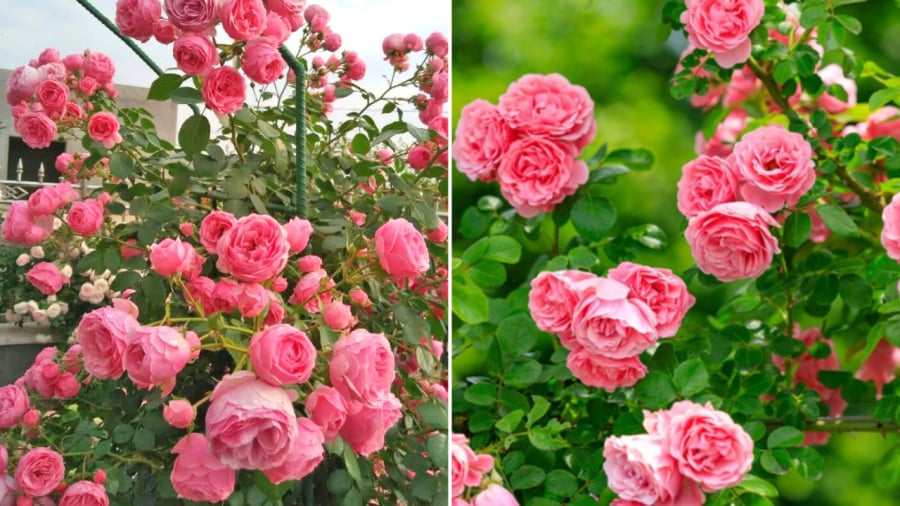Roses are a familiar sight in many gardens and homes. With a wide range of varieties to choose from, you can select those that suit your taste. Roses can bloom all year round and are not only aesthetically pleasing but also have a variety of uses, such as making tea, jam, and cakes, which are beneficial to your health. However, many home gardeners face the challenge of their roses not blooming profusely or the flowers not being as vibrant as expected. To address this, take note of the following tips.
Choose the Right Rose Variety
Roses come in a multitude of varieties, from domestic to imported ones, each offering unique colors, shapes, and fragrances. While you can choose according to your preference, it’s essential to research their distinct growth patterns and blooming habits beforehand. In Vietnam, varieties such as the Sapa antique rose and imported ones like Abraham Darby and Double Delight are popular choices due to their ease of cultivation and long-lasting blooms.
Whether you plant your roses directly in a garden bed or in pots, ensure they receive direct sunlight for at least six hours daily. Roses thrive in sunny conditions and require ample sunshine to grow and continuously produce flowers.

Enrich the Soil with Organic Matter
Roses prefer well-drained, loose, and nutritious soil. Before planting, mix the soil with coconut coir, a small amount of rice husks, and composted manure to enhance its structure and nutrient content. Additionally, maintain soil fertility by regularly applying organic fertilizer.
Watering and Fertilizing
Roses require adequate moisture to thrive. Water them once or twice daily, preferably in the morning or late afternoon. Avoid watering during the hottest part of the day to prevent heat stress. Use a moderate amount of water each time to ensure the roots aren’t waterlogged.
For fertilizer, you can use a diluted solution of NPK (20-20-15) or dynamic fertilizer. During the growth phase, fertilize every 10-15 days. As the plant approaches blooming, switch to potassium fertilizer or fermented rice water (diluted 1:10 with clean water) to encourage larger and more vibrant blooms.
Pruning
Pruning is essential for vigorous growth and abundant flowering. Remove old, weak, or diseased branches, yellow leaves, and spent flowers. After each blooming cycle, prune to prepare the plant for the next round of flowers. Use sharp, clean shears and make a clean cut at a 45-degree angle, just above a healthy leaf bud, about 1 cm from the bud. After pruning, apply fertilizer to encourage new growth and more vibrant blooms.
Pest and Disease Control
Roses are susceptible to pests and diseases, particularly mealybugs and powdery mildew. To control and prevent infestations, periodically spray the entire plant with a garlic-chili solution (garlic crushed and soaked with chili and water for 24 hours). This natural repellent effectively keeps mealybugs at bay. For fungal infections, purchase a suitable fungicide from a gardening store and follow the package instructions.
Growing roses is not as daunting as it may seem. By understanding their basic needs and applying the tips mentioned above, you can enjoy healthy roses with abundant blooms. Keep these tips handy and start cultivating your very own rose garden today!






























